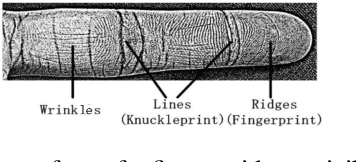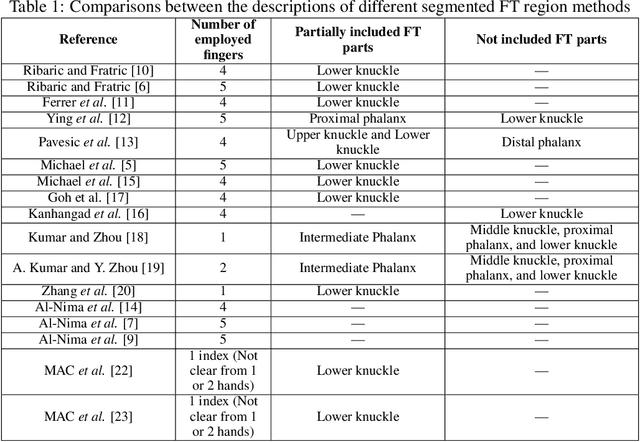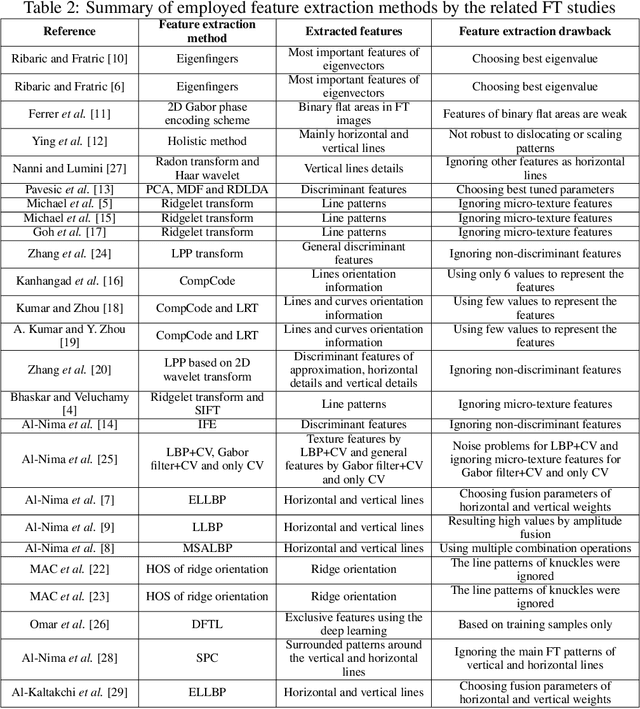Finger Texture Biometric Characteristic: a Survey
Paper and Code
Jun 07, 2020



\begin{abstract} In recent years, the Finger Texture (FT) has attracted considerable attention as a biometric characteristic. It can provide efficient human recognition performance, because it has different human-specific features of apparent lines, wrinkles and ridges distributed along the inner surface of all fingers. Also, such pattern structures are reliable, unique and remain stable throughout a human's life. Efficient biometric systems can be established based only on FTs. In this paper, a comprehensive survey of the relevant FT studies is presented. We also summarise the main drawbacks and obstacles of employing the FT as a biometric characteristic, and provide useful suggestions to further improve the work on FT. \end{abstract}
 Add to Chrome
Add to Chrome Add to Firefox
Add to Firefox Add to Edge
Add to Edge